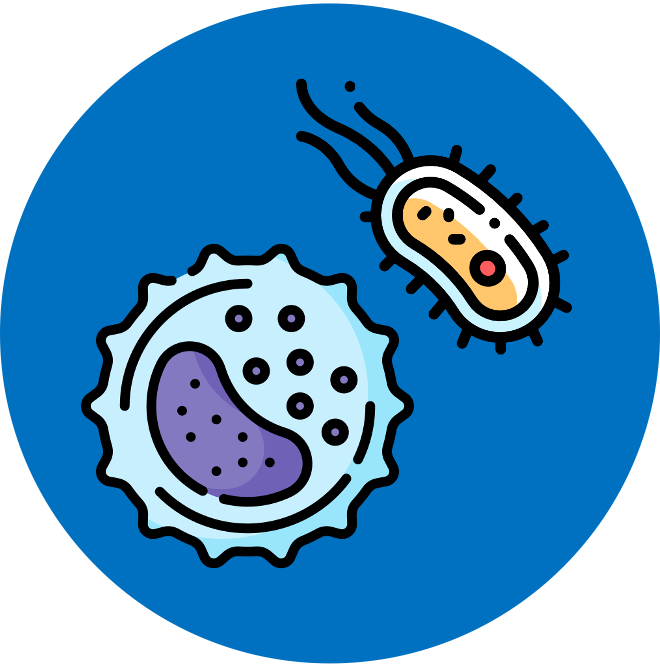

Identifying Cells
Different cell types can be categorised according to a number of distinguishing characteristics – cell types that can be identified include:
-
Prokaryotic versus eukaryotic cells, types of prokaryotes (bacteria versus archaea) and types of eukaryotes (animal, plant and fungal cells)
Prokaryotes vs Eukaryotes
Prokaryotic and eukaryotic cells differ in the composition of their DNA, types of organelles, methods of reproduction and size
-
Prokaryotes
Eukaryotes
DNA
-
DNA is naked
-
DNA is circular
-
No introns
-
Has histones
-
DNA is linear
-
Has introns
Organelles
-
No nucleus
-
Has no compartments
-
70S ribosomes
-
Has nucleus
-
Has compartments
-
80S ribosomes
-
-
Reproduction
-
Asexual only (binary fission)
-
Cells are haploid
-
Asexual or sexual
-
Haploid or diploid
Average Size
-
Smaller (>10µm)
-
Unicellular organisms
-
Larger (~100µm)
-
Often multicellular
-
Prokaryotic Cells Comparison
Bacteria and archaea differ in the composition of membrane lipids, the structure of the cell wall, the organisation of DNA and their susceptibility to certain antibiotics
-
Archaea share certain similarities with eukaryotic cells, indicating a shared evolutionary history
-
Bacteria
Archaea
Membrane
-
Ester-linked lipids
-
Ether-linked lipids
Cell Wall
-
Peptidoglycan
-
No peptidoglycan
-
-
DNA
-
Naked DNA
-
No introns
-
Has histones
-
Introns are rare
Antibiotics
-
Susceptible
-
Not susceptible
-
Eukaryotic Cells Comparison
Animal, plant and fungal cells differ in their mode of nutrition, cell wall composition, size and function of vacuoles, motility and presence of certain organelles
-
Animal
Plant
Fungus
Nutrition
-
Heterotroph (ingestion)
-
Autotroph
-
Heterotroph (absorption)
Cell Wall
-
None
-
Cellulose
-
Chitin
-
-
Vacuoles
-
Small
-
Temporary
-
Large and central
-
Permanent
-
Large and central
-
Permanent
Motility
-
Motile
-
Have cilia and flagella
-
Non-motile
-
No cilia or flagella
-
Non-motile
-
No cilia or flagella
Organelles
-
Centrioles
-
Lysosome
-
Chloroplast
-
Plastids
-
No unique organelles
-
-
Animal
Plant
Fungus
Nutrition
-
Hetero-
-
Auto-
-
Hetero-
Cell Wall
-
No
cell wall
-
Cellulose cell wall
-
Chitinous cell wall
-
-
Vacuoles
-
Small vacuoles
-
Large vacuoles
-
Large vacuoles
Motility
-
Cilia and flagella
-
No cilia or flagella
-
No cilia or flagella
Organelles
-
Centrioles
Lysosome
-
Plastids
-
No unique organelles
-




